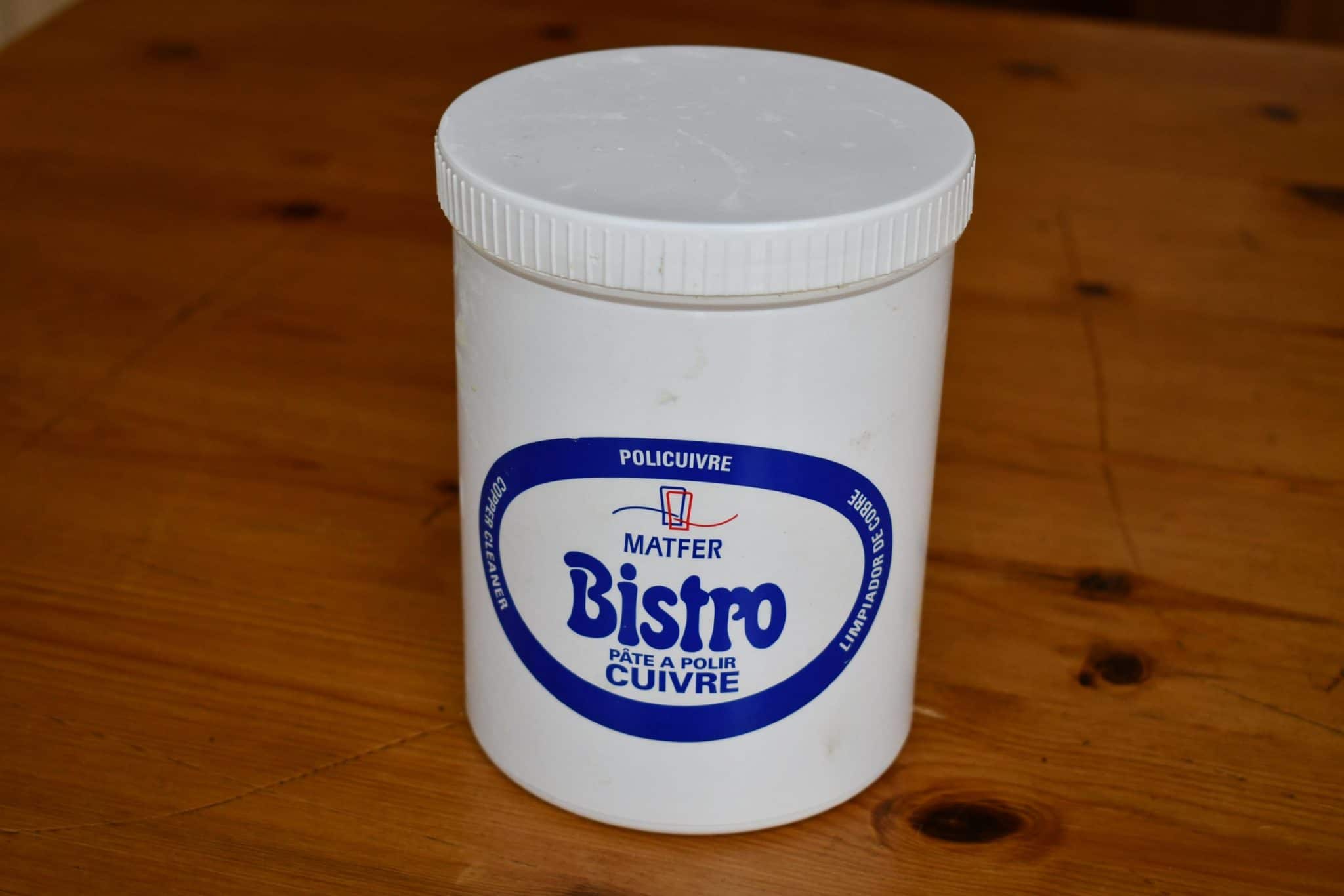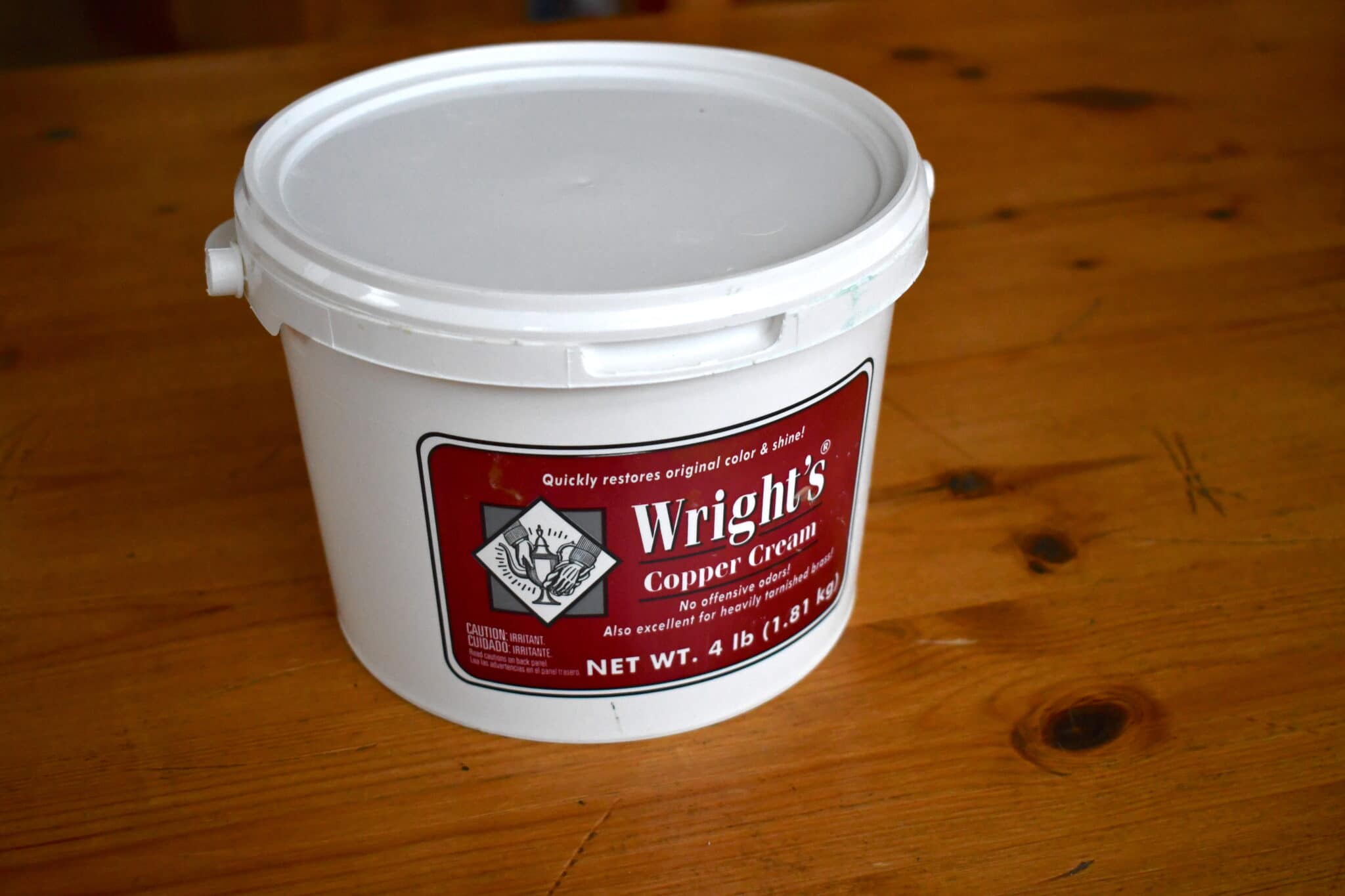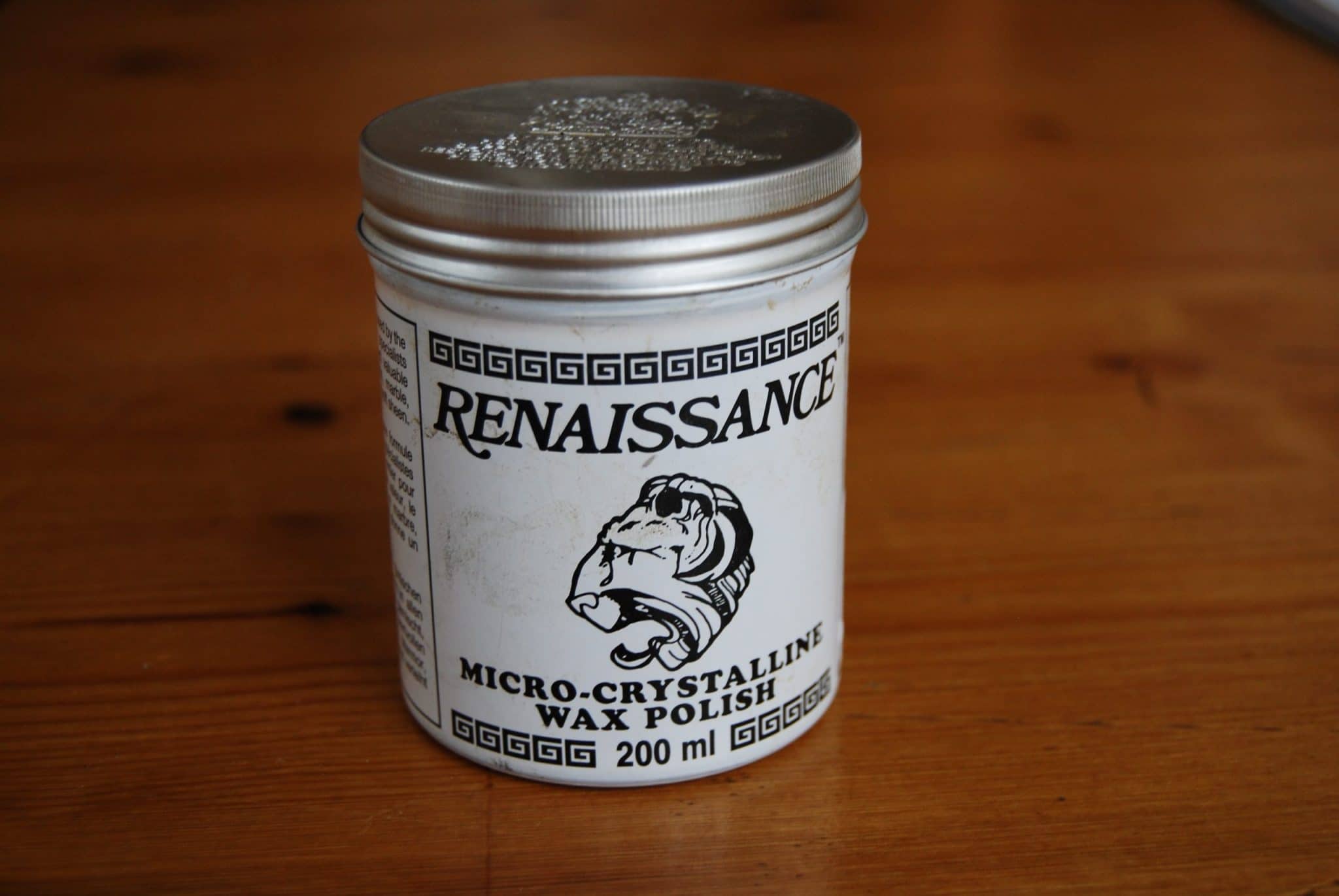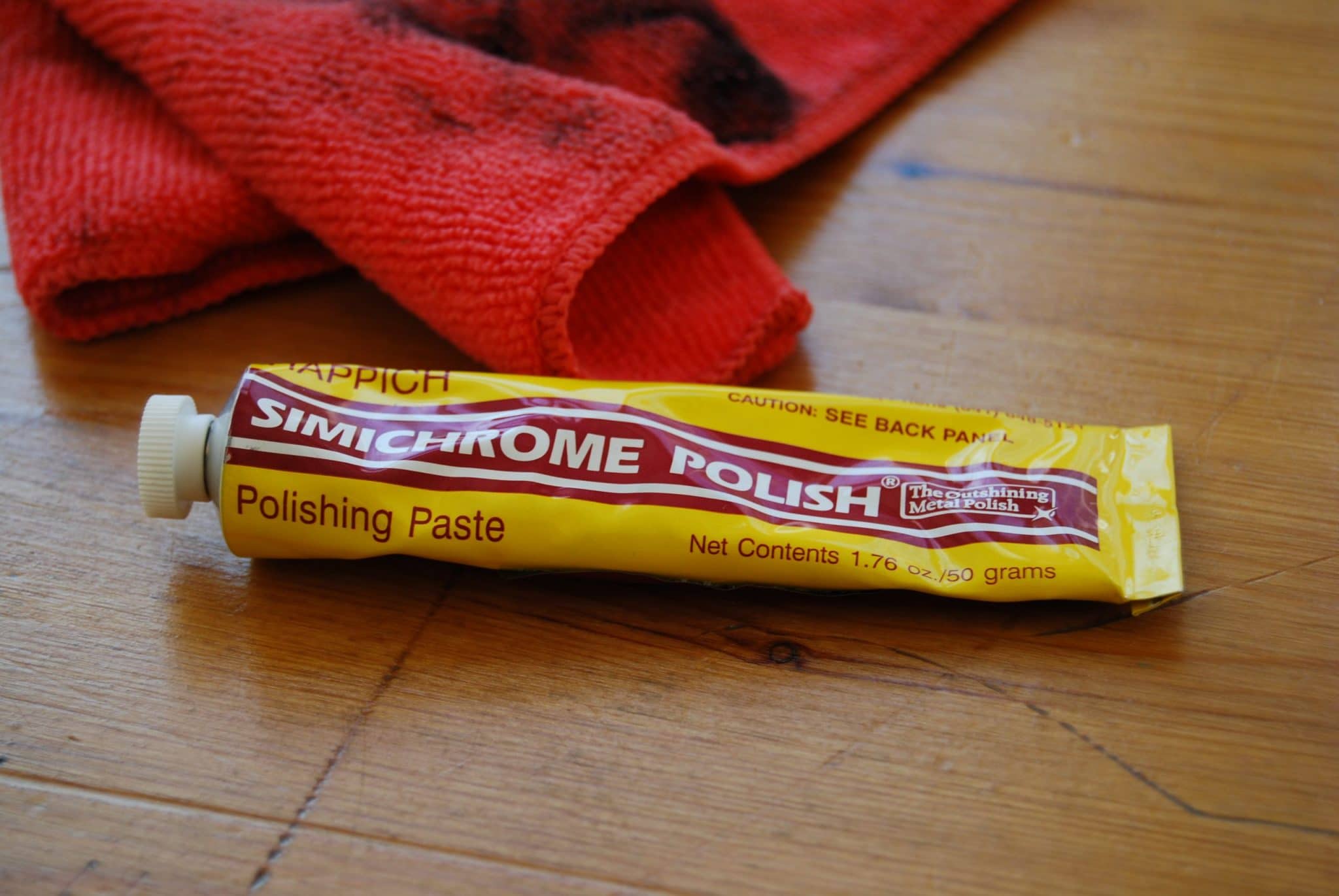In my experience, this is the best way to remove tarnish.

My priorities when I clean tarnish are, first and foremost, not to scratch the surface of the copper, and second, to work quickly — within minutes — so that the process isn’t so time-consuming that I hate doing it.
Given these priorities, I’ve come to prefer the commercial copper cleaner Bistro, marketed by Matfer Bourgeat, which seems to be chemically identical to Copperbrill, marketed by Mauviel. (Those are links to the product in Amazon but I’m not endorsing a particular seller — shop around to find the right size and price for you.)
In my experience, Bistro dissolves tarnish quickly and uses fine-grade abrasives that scratch so minutely as to be invisible to the eye. It was Harestew who first recommended Bistro to me, and it’s what she uses to clean copper for her customers on eBay. (She also uses and recommends Simichrome polish.) According to her many years of trial and error with cleaners, Bistro is the one that preserves that shiny mirror look that is so crucial for her business.
The back label of Bistro includes the usual set of multilingual instructions. As with other commercial cleaners, the directions are to dampen the copper surface and the application sponge (one is included in the container), wipe the cleaner across the surface, massage it in, and then rinse and dry it.
Two pro tips:
- To conserve cleaner, don’t rinse the applicator sponge out and you’ll avoid washing some unused cleaner down the drain. Moisten the sponge with a little water when you start, but you don’t need to clean it when you’re done.
- Bistro’s acid is strong enough to etch a tin lining, which will darken (but not damage) it. Try to keep extra cleaner from spreading into the interior and take care not to leave fingerprints. If you do get Bistro on the inside, just wash it off as soon as you notice it — don’t let it sit for minutes.

Though it’s labeled for Matfer SA in France, the cleaner is made by Sterling Polish Company in Denmark. Bistro’s label doesn’t list what’s in it (as seems to be the case with non-US-made chemical products) but its safety data sheet identifies its active ingredients. For its acid, it uses citric acid in a 1-5% concentration, similar to other cleaners I’ve seen; Bistro’s overall pH is 5, making it decently acidic. For its abrasives, it uses quartz (SiO2, Mohs hardness 7) and aluminum oxide (Al2O3, Mohs hardness 9).
I was surprised to see how hard these abrasives are. The Mohs scale of mineral hardness tops out at 10 — diamond — so aluminum oxide at 9 is quite hard, and given how non-scratch Bistro is for me I was expecting some softer abrasives. I asked Harestew about this, as she is not only an expert on copper but also knowledgeable about copper care and the science and chemistry behind it. She told me that it’s not necessarily the hardness of the abrasive but the size of each particle that matters:
The grit size, the way the aluminum oxide compound is made, how granular or powdery it is, how friable, what it reduces to, the shape of the particles, the medium that carries them, etc., and much more, all affect how how it behaves, and therefore its use. It’s a much bigger subject than you might think, and I assume MSDS sheets only require the basic info, not all the trade secrets, many of which, I’m sure, are closely guarded. There are many forms of fine-grained alumina, white fused, white calcined, hydrated, all with platelet shaped particles, and many other coarser forms of alumina, many, many more used in other cutting, grinding, sharpening operations, and as refractories, which is another subject… With calcined alumina, I think you get the hardness needed to polish, but also the fineness needed to produce a fine surface.
If it is the processing of Bistro’s abrasives that produces its superior non-scratch performance over others I’ve tried, then it may also explain the price differential as well. Bistro (and its twin, Copperbrill) are more expensive than other abrasive cleaners such as Wright’s and Red Bear, and well more than household cleaners like Bon Ami and Bar Keeper’s Friend. However, for me, Bistro’s performance justifies the cost, and I have set other brands aside. If you have copper pieces with a polish you wish to preserve — or even improve — I recommend Bistro wholeheartedly.


